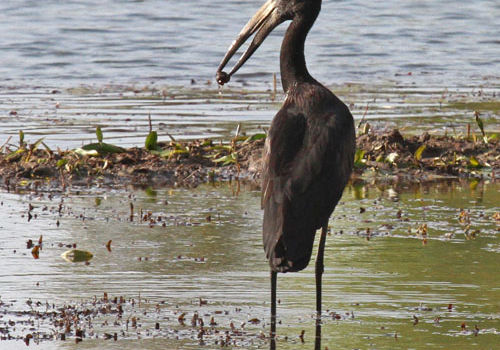
African openbill
Anastomus lamelligerusAfrican openbill
Introduction: African openbills (Anastomus lamelligerus) are found mainly in wetlands such as floodplains, flooded pans, marshes, ponds, swamps, streams, dams and lagoons.
Distribution: Northern Namibian range only such as Etosha National Park, Kaudom Game Park, Zambezi Region, Kwando River, Chobe/Zambezi Rivers and Victoria Falls. Common in Okavango Delta and Moremi Game Reserve.
Diet: Forages singly or in groups and occasionally on the backs of hippos for snails, mussels and possibly frogs.
Description: Medium-sized stork with highly specialized bill with the lower mandible curved and separated by a gap from the upper mandible. This adaptation allows the African openbill to feed on molluscs. Bill-clattering, a feature on most other storks, cannot be performed because of this feature. Lamelligerus is a Latin phrase for 'a small, thin, metal plate' which refers to the flattened feather shafts, especially on the underparts.
Breeding: Both male and female build a platform made of twigs and sticks where 3 to 5 eggs are laid and incubated for up to 30 days.
Size: 60cm.
Weight: 1.1kg.
Klein Windhoek

